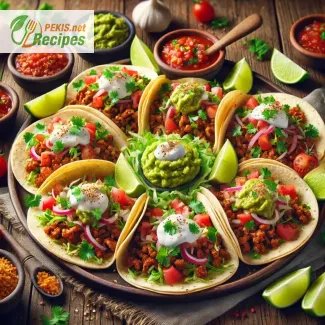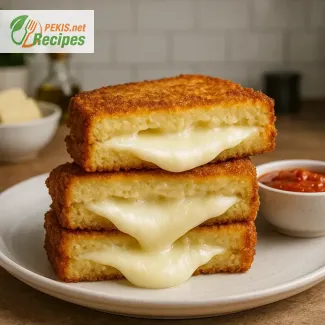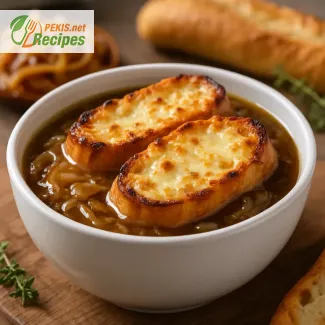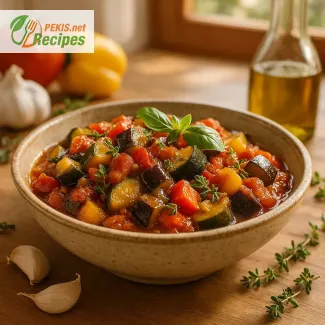
Few dishes embody the vibrant culinary spirit of Mexico like tacos—simple yet bursting with complex flavors that tell stories of culture, tradition, and ingenuity. A taco is more than just a meal; it's an experience, a versatile canvas where ingredients, textures, and flavors come together in harmony. Whether you prefer them street-style or gourmet, tacos never fail to delight the senses.
The Foundation: Handmade Tortillas
At the heart of every taco lies the tortilla—a humble yet essential component that cradles the bold fillings. Authentic Mexican tacos are typically made with soft corn tortillas, their earthy flavor providing the perfect backdrop for the vibrant toppings. In northern Mexico, however, flour tortillas often take the stage, offering a subtly sweet and pliable alternative. Fresh, warm tortillas are not just a vessel; they are a key player, infusing every bite with a touch of authenticity.
The Filling: A Symphony of Flavors
The true soul of tacos lies in the filling, which varies widely depending on regional traditions and personal preferences. From smoky, spiced beef carnitas to tender chicken tinga simmered in tomato and chipotle sauce, the meat options are tantalizing. Vegetarians and vegans are equally spoiled, with choices like grilled zucchini, spiced mushrooms, or roasted poblano peppers combined with hearty beans or lentils.
For a truly indulgent experience, slow-cooked barbacoa or crispy pork al pastor, marinated in a rich blend of pineapple juice, chilies, and spices, offer an explosion of umami with every bite. Each filling is lovingly prepared, balancing robust flavors with subtle notes that pay homage to traditional Mexican recipes.
Fresh Toppings: The Perfect Counterpoint
A taco isn’t complete without its vibrant toppings, which add layers of texture and freshness. Chopped cilantro and diced onions lend a crisp, herbaceous note, while tangy pickled radishes or red onions provide a zesty kick. For an extra burst of flavor, a squeeze of lime cuts through the richness, adding a refreshing acidity that brings the dish to life.
Want to add some heat? Fresh jalapeños or a smoky chipotle salsa can elevate the flavor profile, providing just the right amount of spice. Creamy avocado slices or a dollop of guacamole balance the heat with their smooth, buttery richness, while crumbled queso fresco or grated cotija cheese adds a salty, tangy finish.
Sauces: The Signature Touch
The magic of tacos lies in their customizability, and the sauces are no exception. A taco without sauce is like a story without an ending—it leaves you wanting more. From fiery salsa roja to mild and tangy salsa verde, these sauces not only complement the filling but enhance its flavors. Creamy chipotle mayo or spicy crema provides a luscious, slightly smoky layer, while a drizzle of hot sauce offers a daring edge for heat seekers.
Why Tacos Are Universally Loved
Tacos are more than just a food; they are a culinary journey that transcends borders and cultures. Their versatility ensures that everyone—whether a meat lover, a vegetarian, or someone with gluten sensitivities—can enjoy their own unique version. Perfect for a casual lunch, a festive gathering, or a quick bite on the go, tacos offer something for every occasion.
What truly makes tacos special is the connection they create. Whether enjoyed at a bustling street stall in Mexico City or a cozy dinner table at home, tacos bring people together. They are meant to be shared, savored, and celebrated, embodying the communal spirit of Mexican cuisine.
The Global Appeal of Tacos
Today, tacos have become a global sensation, inspiring countless variations and fusion recipes. From Korean beef tacos topped with kimchi to Baja-style fish tacos with crispy battered fish and tangy slaw, their adaptability knows no bounds. Yet, no matter how far tacos travel or evolve, their heart remains rooted in the traditions and flavors of Mexico.
A Celebration of Mexican Heritage
Tacos are more than a culinary delight—they are a tribute to the rich tapestry of Mexican culture. Every bite is a celebration of vibrant spices, fresh ingredients, and centuries of culinary wisdom passed down through generations. Whether you’re savoring a classic taco al pastor or experimenting with bold new flavors, the essence of tacos lies in their ability to bring joy, flavor, and tradition to every plate.
So next time you take a bite of a taco, remember: you’re not just eating; you’re experiencing the soul of Mexico. Bon appétit—or as they say in Mexico, ¡Buen provecho!
1. Prepare the Tortillas
- In a mixing bowl, combine corn flour and salt. Gradually add warm water while kneading until a dough forms. It should be soft but not sticky.
- Divide the dough into 12 equal balls. Cover with a damp cloth to prevent drying.
- Flatten each ball into a thin circle using a tortilla press or rolling pin.
- Heat a skillet over medium heat. Cook each tortilla for 1 minute per side until lightly browned. Keep warm under a cloth.
2. Prepare the Meat Filling
- Heat olive oil in a skillet over medium-high heat.
- Sauté onion and garlic until fragrant, about 2-3 minutes.
- Add meat, breaking it into smaller pieces, and cook until browned, about 5-7 minutes.
- Mix in cumin, smoked paprika, chili powder, salt, and pepper. Cook for 1 minute.
- Stir in tomato purée and simmer for 5 minutes until thickened.
3. Assemble the Tacos
- Place a warm tortilla on a plate. Add 2-3 tablespoons of the meat mixture.
- Top with lettuce, tomatoes, red onions, and cilantro.
- Add guacamole, salsa, and sour cream (if using). Sprinkle with cheese if desired.
- Serve with a lime wedge for a zesty touch.
Enhancing the Taco Recipe: Professional Tips and Advice
Tacos, with their versatile structure and vibrant flavors, offer endless opportunities for customization and refinement. Whether you’re aiming to elevate the dish with unique ingredients, adapt it for dietary restrictions, or enhance the presentation, this recipe can serve as a canvas for creative culinary expression. Below are detailed professional tips to help you influence and improve the recipe, ensuring it meets your preferences and dietary needs while retaining its authentic Mexican roots.
1. Choosing the Right Tortillas
The tortillas form the foundation of tacos, and selecting the right type can significantly affect the dish.
- Corn vs. Flour: While this recipe uses traditional corn tortillas, you can substitute them with flour tortillas for a softer texture and slightly sweeter taste. Ensure they are fresh, as stale tortillas can detract from the flavor.
- Homemade Tortillas: For a more authentic experience, consider making your tortillas from scratch. Adding a pinch of paprika or turmeric to the dough can subtly enhance flavor and provide a vibrant hue.
- Gluten-Free Options: Stick with masa harina for gluten-free tortillas or explore alternative flours like cassava or almond for a unique twist.
2. Enhancing the Meat Filling
The meat filling is the heart of the taco, and small adjustments can bring out deeper flavors or cater to specific tastes.
- Spice Adjustments: Adjust the spice level to suit your preference by adding extra chili powder, fresh jalapeños, or smoked chipotle peppers for a deeper, smoky flavor. If you prefer a milder filling, reduce the chili powder and use sweet paprika.
- Marination: Marinate the meat overnight in lime juice, garlic, and spices to infuse it with robust flavors and tenderize the protein.
- Alternative Proteins: Experiment with shredded pork, turkey, or lamb for variety. For a pescatarian option, grilled shrimp or seasoned white fish like tilapia work beautifully.
- Vegetarian and Vegan Options: Replace the meat with seasoned tofu, jackfruit, or a mix of black beans and sweet potatoes. Add extra cumin and paprika to replicate the smoky depth of traditional meat fillings.
3. Elevating the Toppings
Toppings bring freshness and texture, and small upgrades can make them shine.
- Vegetables: Roast the tomatoes or peppers before dicing to enhance their sweetness and add a slight charred flavor. Use a mandoline to achieve consistent, thin slices of radish or onions for a professional finish.
- Herbs: Swap or mix cilantro with other fresh herbs like parsley or mint for a unique twist. Use microgreens for an upscale presentation.
- Pickled Additions: Quick-pickle red onions, jalapeños, or carrots in vinegar, sugar, and salt for a tangy crunch that contrasts with the rich filling.
4. Perfecting the Sauces
Sauces tie the flavors together, and slight modifications can elevate the taco experience.
- Guacamole Variations: Add diced mango or pineapple to guacamole for a sweet and tropical flavor. For a richer taste, mix in a small amount of sour cream or Greek yogurt.
- Salsa: Experiment with salsa roja (made with roasted red tomatoes) or salsa verde (based on tomatillos) to pair with different fillings. Add smoked chili or grilled garlic for depth.
- Hot Sauce: Offer a variety of heat levels, from mild to fiery, ensuring guests can customize their tacos to their spice tolerance.
5. Presentation and Assembly
Visual appeal is critical for tacos, especially when serving them for guests or photographing the dish.
- Layering: Layer the fillings strategically to ensure a balanced bite. Place the meat first to anchor the taco, followed by vegetables, then sauces.
- Plate Design: Arrange the tacos on a rustic wooden board or a colorful platter. Surround them with lime wedges, a sprinkle of fresh herbs, and small bowls of extra sauces.
- Garnishing: Use colorful garnishes like edible flowers, finely grated cheese, or a light dusting of smoked paprika for a professional look.
6. Adjusting for Dietary Restrictions
Tacos are naturally adaptable, making it easy to cater to different dietary needs.
- Lactose-Free: Replace sour cream and cheese with lactose-free versions or use a creamy tahini sauce.
- Vegan-Friendly: Ensure all toppings and sauces are plant-based. Use vegan yogurt in place of sour cream and nutritional yeast as a cheese substitute.
- Low-Carb Option: Use lettuce leaves or low-carb tortillas instead of traditional tortillas.
7. Healthier Alternatives
Small tweaks can make tacos more nutritious without compromising flavor.
- Reduce Sodium: Opt for low-sodium tomato purée and spices, and use herbs like cilantro or parsley to enhance flavor naturally.
- Increase Fiber: Add ingredients like quinoa, black beans, or chickpeas to the filling for a fiber boost.
- Healthy Fats: Use avocado oil instead of olive oil for cooking the filling and add extra avocado slices for a dose of heart-healthy fats.
8. Exploring Regional Variations
Experiment with regional taco styles to expand the recipe’s versatility.
- Baja-Style Tacos: Replace the meat with beer-battered fish or shrimp, and top with a tangy slaw and creamy chipotle mayo.
- Tacos de Canasta: Steamed tacos filled with potatoes, beans, or pork for a soft and comforting texture.
- Tacos al Pastor: Use marinated pork cooked on a vertical spit and served with pineapple chunks for a sweet-savory balance.
9. Batch Cooking and Meal Prep
Tacos are perfect for meal prep or serving at parties.
- Prep Ahead: Make the tortillas, meat filling, and toppings in advance. Reheat components separately before assembly.
- Freezing: The meat filling freezes well; prepare in large quantities and portion for quick meals.
- Taco Bar: Set up a taco bar with all the components and let guests assemble their tacos. This is ideal for gatherings and allows customization.
10. Sustainability Tips
Make the recipe more eco-friendly by sourcing local and organic ingredients.
- Seasonal Vegetables: Use vegetables that are in season for the freshest taste and lower carbon footprint.
- Homemade Sauces: Reduce packaging waste by making guacamole, salsa, and sour cream alternatives at home.
Tacos are a culinary playground, offering endless possibilities to experiment and refine. By implementing these tips, you can craft a taco experience that is not only authentic and delicious but also tailored to your preferences and dietary goals. With attention to detail and a touch of creativity, this beloved dish can be transformed into a masterpiece for every occasion.
- Gluten: If using store-bought tortillas, check for gluten-free labels. For homemade, masa harina is naturally gluten-free.
- Dairy: Sour cream and cheese contain lactose. Replace with lactose-free options or omit.
- Alternative for Meat: Use plant-based mince or black beans for a vegetarian option.
- Vitamin C: 25 mg (Boosts immunity and skin health)
- Iron: 5 mg (Supports oxygen transport in blood)
- Calcium: 120 mg (Strengthens bones and teeth)
- Potassium: 450 mg (Maintains heart and muscle function)
- Lycopene: Found in tomato purée and salsa, supports heart health and reduces inflammation.
- Vitamin E: Present in avocado and olive oil, protects cells from oxidative stress.





